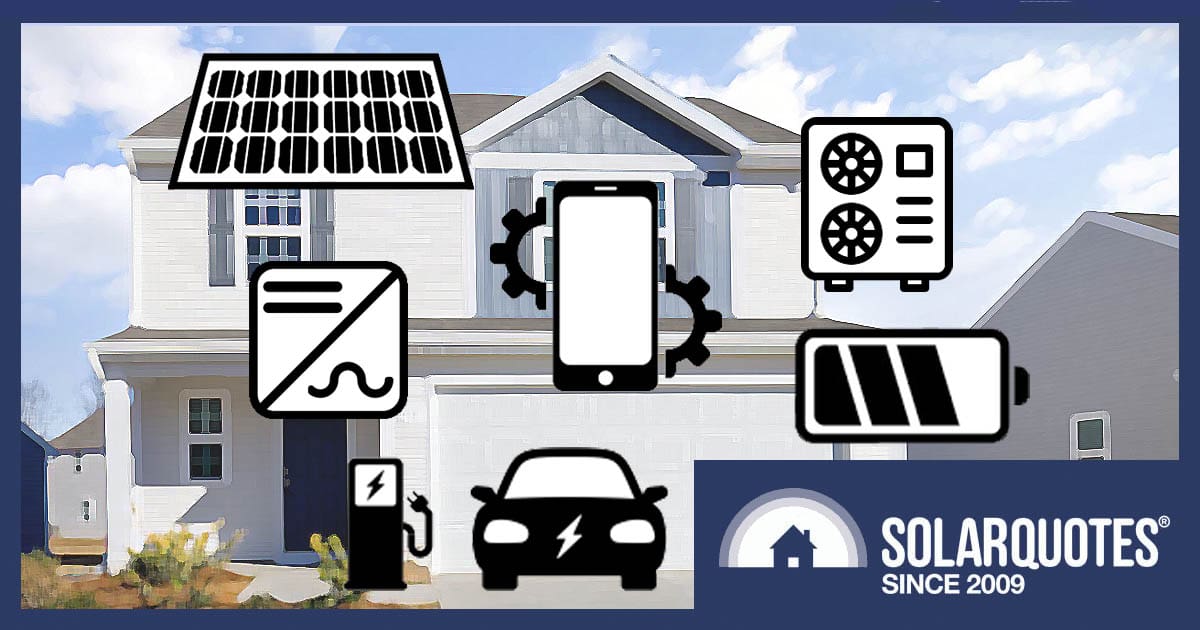
Let’s face it: The number of different solar-related products out there is mind-boggling to the average consumer. There’s a myriad of solar panels, inverters, batteries, EV chargers, and assorted smart energy devices.
As the world scrambles to electrify everything, the list grows longer, and the lack of standardization that afflicts every industry means you can be left with a solar inverter, home battery, EV charger and other appliances that can’t talk to each other.
Early adopter Tom, for example, bought a SolarEdge inverter, Sonnen battery, and myEnergi EV charger and struggled to get them to talk:
Wouldn’t it be easier to buy the whole suite from a single manufacturer and know that when you press the go button, everything will work?
The good news is that more and more solar companies are offering just that – a whole range or ecosystem of interconnected solar products designed to work together seamlessly.
Tesla Powershare
Last week’s launch of Tesla’s Cybertruck with its innovative ‘Powershare‘ Vehicle-to-Home (V2H) technology marks a significant leap forward. This system, leveraging Tesla’s product ecosystem, enables bi-directional charging using existing Tesla hardware.
Our American cousins do not need to buy a $10,000+ bi-directional charger to achieve bi-directional charging like Joseph had to:
American Tesla fans who want to power their home with their vehicle can reuse their existing Tesla Universal Wall Connector EV charger1, Powerwall, and Tesla Gateway box. Oh – and until Tesla adds Powershare to their other cars, they’ll also need a Cybertruck.
Enabling bi-directional charging at almost no extra cost (assuming you’ve already invested in the product ecosystem) has thrown down the gauntlet to the likes of Fronius, Enphase, SMA and SolarEdge. They’ll need to catch up quickly to compete.
Communication Is Key
As we move to mostly variable generation on our roofs and the grid, we need to coordinate all hardware and devices effectively so we can:
- Exchange real-time data to maximise solar self-consumption.
- Communicate between energy sources and EVSE to optimize charging times.
- Intelligently manage grid imports and exports to support the grid, minimise costs and maximise earnings.
- View all energy flows and controls on a single app.
The problem that exists right now concerning devices from differing manufacturers is twofold. Due to the lack of standardisation in communication protocols, not all hardware and software will talk to each other. Secondly, even if they share the same comms protocol, in the event of a malfunction, it’s common for one vendor to blame the other, resulting in a stand-off and the customer getting caught in the crossfire.
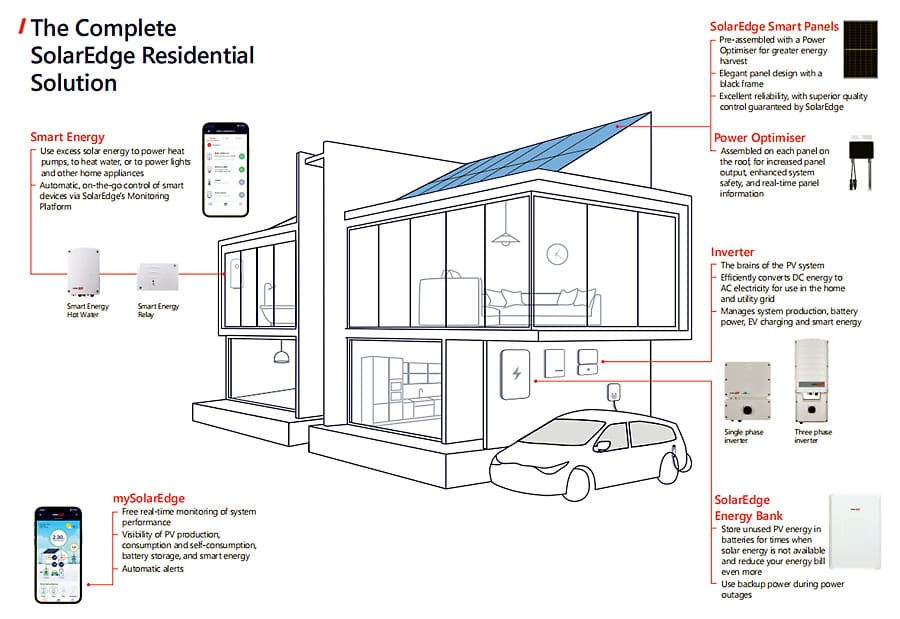
SolarEdge offers a wider array of solar product categories than most vendors. How quickly can they add their version of Powershare? Image: SolarEdge
Pros And Cons Of Solar Product Ecosystems
Choosing a brand that offers a fleet of interrelated products sure makes sense in many ways, but it’s not all clear skies and plain sailing. Along with the above advantages, there’s a flip side. Let’s take a look.
Product Ecosystem Pros
✅ Enhanced Compatibility: Products from the same manufacturer are compatible. They are designed to work together seamlessly, enabling a holistic system to manage solar production, energy storage, and EV charging.
✅ Simplified Management: A single app or platform allows users to control and monitor all connected devices from a single interface, reducing complexity, giving a better user experience.
✅ Reduced Hardware Clutter: Minimised need for extra hardware like current transformers in an already crowded switchboard, simplifying installation, enabling an organized, space-efficient setup.
✅ Streamlined Support: Technical support and troubleshooting are often more straightforward when dealing with a single point of contact, and there is less chance of getting caught in a vendor blame game.
✅ Avoiding Duplicated Function: Product ecosystems minimize the occurrence of duplicative functions across various vendors’ hardware, saving money on hardware and installation.
Product Ecosystem Cons
❌ Limited Choices: Opting for a single manufacturer’s ecosystem may limit your choice of specific devices or technologies, potentially restricting customization.
❌ Technology Lag: In some cases, a manufacturer’s ecosystem might lag behind the latest advancements in specific components compared to standalone products from other vendors.
❌ Overlooked Specializations: A manufacturer might excel in one area (e.g., solar panels) but may not offer the best products in every category, leading to compromises in certain aspects.
❌ Dependency on a Single Vendor: Putting your eggs all in one basket means any issues with that vendor could impact the entire system. For example – if Tesla were to go bust, your home energy and transport would all be affected.
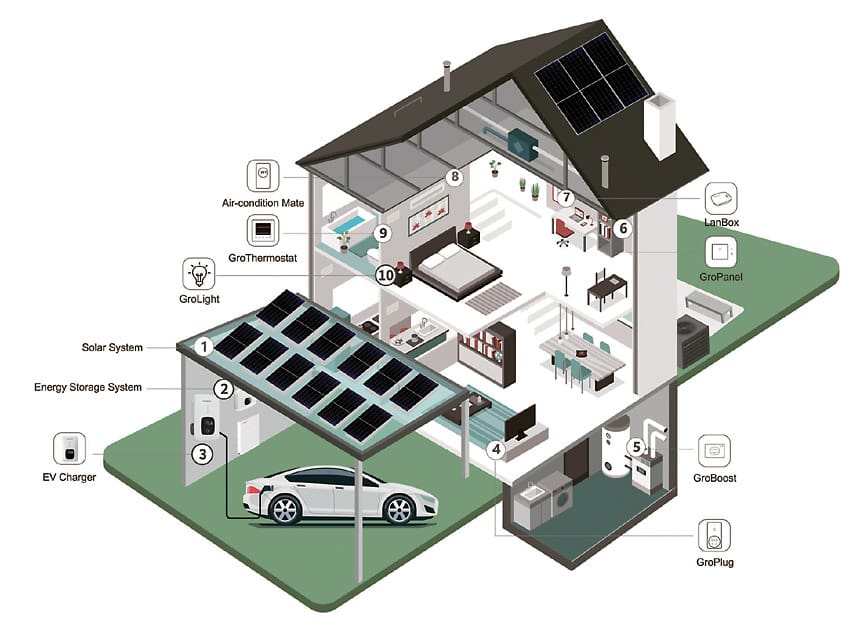
Growatt’s product line and energy management system – Grohome. They’re covering many bases, but are they spreading themselves too thin to do it well? Image: Growatt
Monitoring And Load Management
Virtually all solar products now have monitoring using a phone app or web portal. Solar production monitoring is a bare minimum, and if you don’t have household consumption monitoring, you’re crazy.
Vendors going down the product ecosystem route are now offering more sophisticated tools, such as HEMS (Home Energy Management Systems), to monitor and control their suite of products from a single interface. These come in varying degrees of functionality, from simply monitoring device inputs, to actively and intelligently controlling household electrical loads.
Load management is achieved in a number of different ways. Some systems communicate between hardware using a hard-wired RS485 connection, or wireless via Wi-Fi, Zigbee, RF, or other communication protocols. Appliances can be activated automatically when there is surplus solar power or pre-determined battery state of charge.
Others are fitted with a dedicated load control circuit within the inverter or additional hardware. When a load control event occurs, a set of relay contacts is closed, which can trigger an external contactor to energise a household load, such as a water heater or pump, etc.
If you’re contemplating a single-vendor solar product ecosystem, energy management, including load control of your collective hardware and household appliances, should be sitting high on your list of priorities.
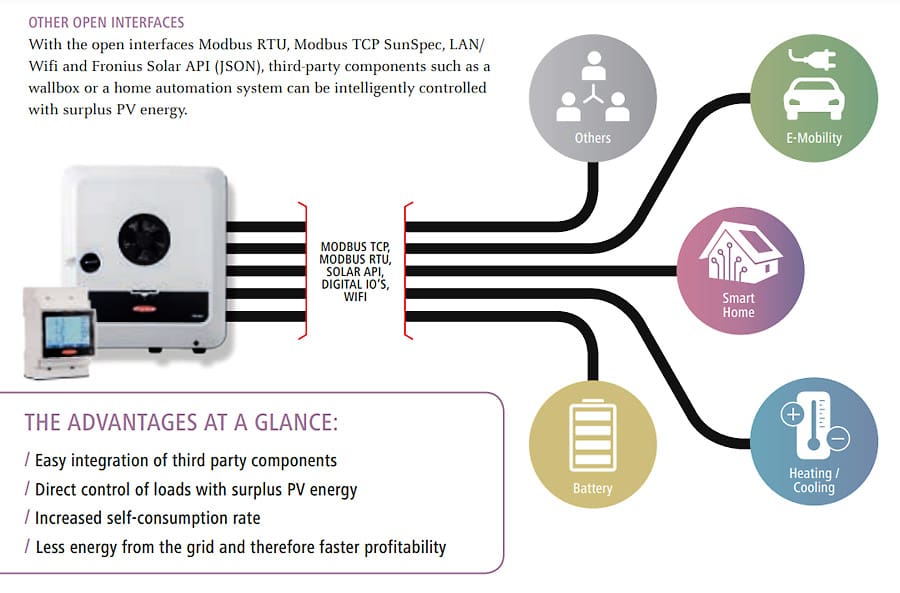
With the inverter-integrated energy management from Fronius, energy-intensive loads in the household can be directly controlled with surplus PV energy. Image: Fronius
How To Choose A Solar Ecosystem Brand
Investigate reputable solar brands that offer integrated ecosystems. Include collaborative partnerships. Look for manufacturers known for reliability, performance, and positive customer reviews. Hopefully, the points raised above, and the following table can be of some help.
Ecosystem Brand Comparison Table
Listed in the following table are solar manufacturers that produce two or more of these product categories – solar panels, inverters, batteries, EVSE, solar diverters, and hot water heat pumps. We could loosely define that as a product ecosystem. They may also manufacture additional hardware devices that don’t fit neatly into the categories above.
Footnotes
- this is different to the Gen 3 Wall connector available in Australia – and was only released in the USA in October ↩

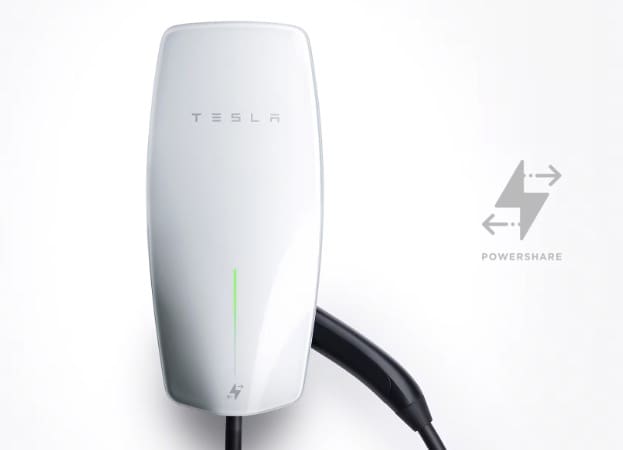
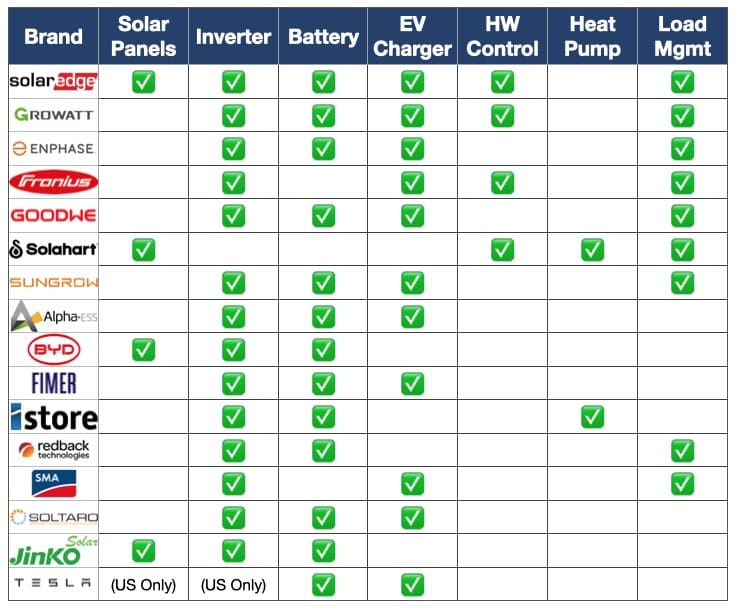
 RSS - Posts
RSS - Posts



Our main obstacle in Australia is not technology, but the Government.
They ensure that our network operators can claim we need more network expenditure (and thus profits for them) rather than using our car batteries. I personally could reduce the duck curve to Zero with my EV, but guess what, am not allowed.
That is our real issue. Ecosystems compete and at least 2 will remain. That is not the issue (see iOS vs. Android). Politicians interested in network and retailer profits are the problem.
Hi WE,
You’re right about DNSPs being incentivised to spend on infrastructure because they get paid on the value of their assets. The incumbent industry is very hard to shift because it’s full of conservative engineer types and it’s overseen by risk averse governments. The slowness to change suits the people who aren’t comfortable having to think or do their work differently. And it also suits the legacy generators so they’re not about to rush into anything either.
It’s worth noting that even going with a single vendor doesn’t guarantee success. We specifically chose a SolarEdge Smart EV charger when we got an EV to let us charge using excess solar only from our SolarEdge inverter / optimiser setup.
It took almost six months and several firmware updates to get the excess solar charging to work. To their credit, SolarEdge did get it to work eventually and it is now working as advertised. I guess this just demonstrates that it’s still early days for these advanced applications.
I had SolarEdge inverter and SolarEdge EV charger and Zigbee controller installed just over 3 years ago. The installers struggled with the configuration and I had to tell them what to do as I HAD READ the documents and like most installers they wanted simple in / out .. anyway the EV charger worked with excess solar the Zigbee controller configuration needed SolarEdge support to get involved .. a bit slow to react as again here in Australia this was unusual..
ANYWAY ..system is working extremely well with Zigbee “Dry Contacts” being prioritized with excess solar to House -> EV -> Spa filter -> Spa heater ..
I’ve replaced my whole solar array & inverter with a Sungrow system. I have to say that making everything wi fi is a pain in the bum. While the system is working well, the interface suffers from a poor wi fi signal which I can’t do anything about, the i Solar Cloud is slow and clumsy and I have had enough of it and I’m no longer going to waste my time stuffing around with it. I liked my old Power One Aurora inverter with it’s push buttons and LCD display, which told me all I needed to know. Technology may have ‘advanced’ but in so many cases it is more complicated and frustrating.
Must agree with you.
As a major point, the Aurora gave you internal temperature readings, the Sungrow app no longer does so.
I am concerned about the difference in the case temperature between the two systems. The Aurora 5kW systems heatsink is twice the size of the (miniscule) Sungrow 10kW one.
And it gets HOT! (Measured at over 75 Deg C)
Yes, I have noticed the increase in temperature. The Aurora had cooling fins at the bottom and they were large. Sungrow has them at the rear and they are small. The installer mounted the inverter on a backing board (of some material which I’ve now partly painted) instead of directly onto the timber battens that enclose the bottom of the house. I asked him why and he said that he doesn’t like installing this particular inverter on a flammable surface!!!!
Maybe I can use the Sungrow inverter surface as a BBQ plate on really hot days. It is 36C where I am at the moment.
I have a SolarEdge PV system, Victron Multiplus 2 Charger-inverter & ZJBeny (OCPP) EV charger & Zenaji Batteries. All talking through Home Assistant.
One major drawback of SolarEdge is you can only have one Modbus connection which in my case is taken up by my Victron Venus GX (running Big software for Node-Red). So, I cannot query my SolarEdge directly from Home Assistant, but must use the Victron to read data. (I could use a Home Assistant Modbus arbitrator module, but I prefer to leave it to the Venus)
Home Assistant is a good platform to aggregate information from disparate pieces of equipment in my view. Incredibly powerful, if a little nerdy….
Kim, you do not include ‘myenergi’ on the list, is that because their stuff seems to be down stream of an inverter?
Hi Andy. To be honest, even though myenergi don’t produce solar/inverters/batteries they probably still deserve to be on the list. I’ll have a word to the boss and see if we can tack them on.
Hmmm, as a (nearly) 70 YO retired mechanical engineer who invested in rooftop PV in 2018 with a view to 1 day having a solar electric powered household with storage and an EV I can only offer 1 comment – WTF???!!
As a non-expert, average (if fairly-well educated), everyday householder, am I supposed to understand, or do I need to understand, Doug’s post above (Sorry Doug, but as the last post[?] yours just completely fried my brain) and if yes, in what century do we believe minions like me will be able to make a sensible decision on a whole-of-house system or understand what providers may be offering me?
I’m sure you guys won’t understand but I’m considering going back to an old copper (wood-fired) i.l.o. my front-loader washing machine and a kero fridge! (I’d suggest you Google it but there’s probably nothing there!) Get me outta here!!!!!
Hey Tim, if it’s any consolation, I didn’t fully understand Doug’s comment either! His comment is valid, but aimed at enthusiasts who like to dabble with home automation. For the rest of us minions, the whole point of this article is to let people know that a manufacturer with a product ecosystem could be a good pathway for the average consumer who ‘just wants everything to work’ with as little effort as possible. Regarding understanding ‘how it all works’ – you also don’t know how your smart phone works but we all still use one. Let me know how that kero fridge goes and if you can get a beer cold enough I’ll join you.
Yep it is still pretty much the wild west when it comes to integrating different vendors products together and then the finger pointing etc. As it is such a rapidly evolving market i think we are going to be stuck with this sort of thing for a good while to come. I can see even the vendors with the all in one solutions having issues with new EV two way charging/discharging, mandatory inverter ramping etc and older products from their ecosystem not working.
There is defintiely a hole in the marketplace for a business that comes in and makes it all work and essentially acts as the project manager for a solar install. Unfortunately whilst we are all in a race to the bottom in terms of prices then people will not see the value in this until after they have purchased and run into the issue.
Tim, once my imminent install is up, I should have a spare bottled gas fridge. The iron sides of the old copper burnt out long ago, but the copper tub is as good as new, even if about the same age as you and me.
But my NQ (nerd quotient) is such that I’m looking forward to running a Cerbo GX with Victron inverters and MPPTs, with the DVCC (Distributed Voltage and Current Control) mode automatically managing power delivery to AC loads (through the inverters) independently of the battery charge rate (monitored by the battery shunt). Whether to rely on the Victron community’s Node Red or add in Home Assistant will evolve, I figure.
VenusOS, the Linux based Victron management OS is open source, and non-quiche-eating nerds can even fiddle with that. I’ve installed it on a Raspberry Pi, for something to fiddle with prior to system installation, but the Cerbo GX has much more I/O, for hooking up the gear. (And it won’t scare the installer, as a weird RPi would.)
Getting on top of it all is assisted by being OCD, but having drawn the plans for the off-grid build, managed the construction, and designed the solar installation, it’s just grist for the mill. (Just don’t tell anyone that I’ve also designed the networked LED lighting controllers, both hardware and software. The latter still needs a bit of tweaking, when there’s a spare minute. The Chinese are cheap and prompt circuit board makers, just send the design file, then et voila.)
Ya hafta fill retirement with sump’n, when you’re a bachelor. (Many married blokes have their time filled for them, I suspect.)
Great info, thanks
Checking required but I’m told that the latest Enphase Battery Controller can control up to 4 hot water type loads. Of course this isn’t just in the inverter (meaning Enphase’s micro-inverters) nor apparently in the Enphase Ensign box